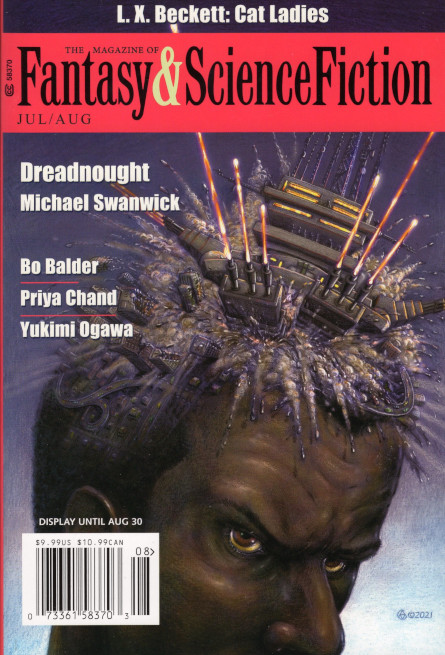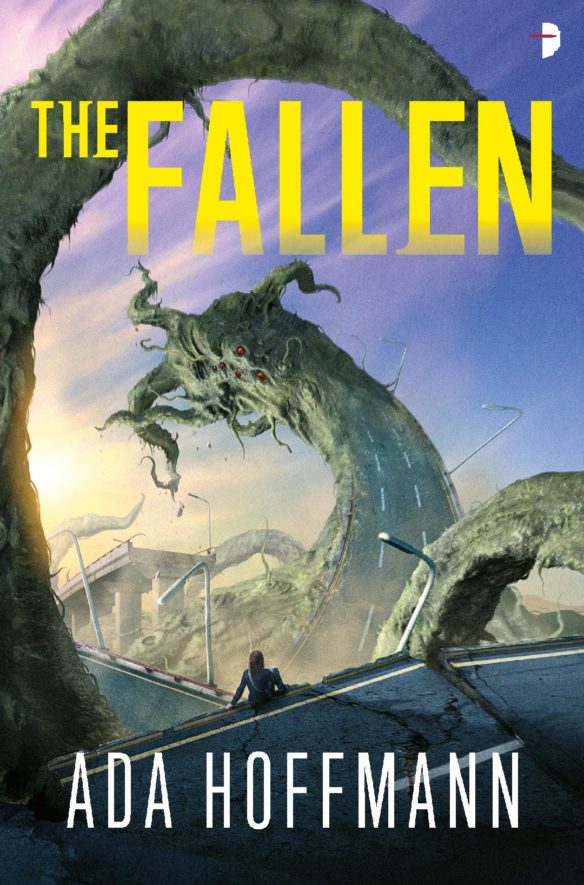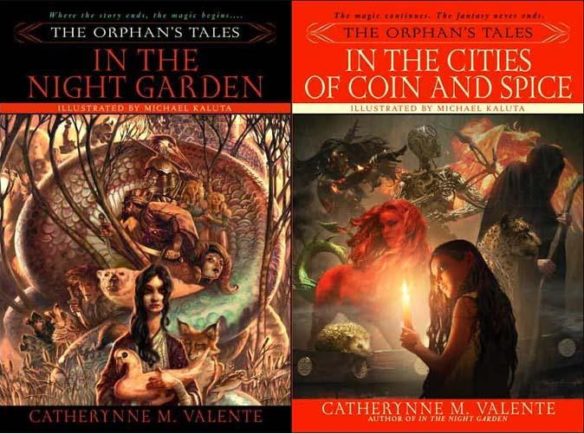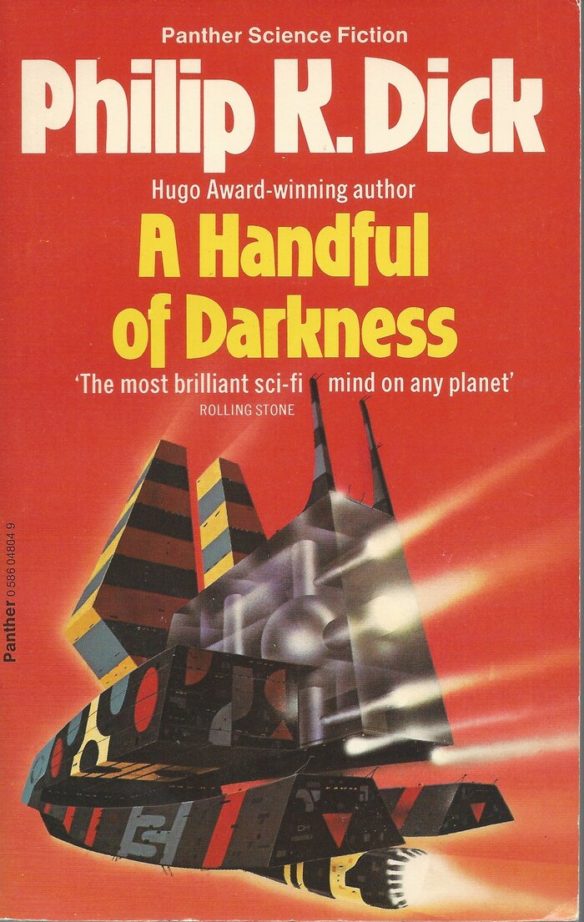(1) MOST CENSORED. “ALA Releases Top 13 Most Challenged Books of 2022” – see the complete list at Publishers Weekly. This genre work is on it:
10. A Court of Mist and Fury by Sarah J. Maas, for claims it is sexually explicit.
(2) 2025 WORLDCON BID STATUS. According to the Chengdu Worldcon PR#1, the deadline for submission of materials for biding for the 2025 Worldcon was April 21, 2023.
Kathy Bond, Co-Chair of the Seattle 2025 Bid, says “We filed our documents in March and received confirmation that they were received by the Chengdu team.”
However, all are waiting on the Chengdu committee to confirm whether that was the sole filed bid.
(3) THE STATE OF TRADPUB SALARIES. A Publishers Weekly survey sees “Starting Salaries at Big Publishers Grow”.
As of April 1, the average entry-level salary for publishing employees located in New York City at the Big Five trade publishers and Scholastic was $47,583, up from $38,583 before the Covid-19 pandemic, according to a recent survey conducted by PW. That marks an increase of 23.3%, during a period when prices rose 12.4%, according to the U.S. Bureau of Labor Statistics.
Publishers raced to increase starting salaries beginning in 2020, after the onset of the pandemic and the murder of George Floyd by Minneapolis police prompted book business workers to call attention to social justice causes, including the need for publishing employees to make a living wage. Another round of salary increases occurred earlier this year across the Big Five—including at HarperCollins, where union members ended a three-month strike in February.
According to the publishers polled in this survey, staffers work between 35 and 40 hours a week, depending on the company, and all are eligible for overtime. Respondents to the industrywide 2022 PW salary survey said they were working an average of 42 hours per week—including time outside the office—the same number of hours they reported working in 2021. The survey also found that median compensation for staff with less than five years of experience was $46,000 for editorial, $48,000 for sales and marketing, and $61,500 for operations and production….
(4) SEE ENDEAVOUR AWARD WINNER INTERVIEW. The Endeavour Award for science fiction and fantasy published by Pacific Northwest authors is announcing a new series of interviews and readings featuring winners, finalists, judges, and other PNW luminaries. The first interview will be with 2021 Endeavour Award winner Erica L. Satifka, who won the prize for her short story collection How to Get to Apocalypse and Other Disasters. The event will be held Friday, April 28 at 4:00 p.m. Pacific (7:00 p.m. Eastern), and will include an interview and a reading from her book. To join, visit the Endeavour Award’s Facebook page.
The award administrator is currently seeking entries for books published in 2022. Entries are free. Please contact Jim Kling at [email protected] for more information.
Since 1999, The Endeavour Award has recognized science fiction or fantasy works of 40,000 words or more, or single-author collections of short fiction. The author(s) must have had legal or physical residence in the Pacific Northwest (Alaska, Oregon, Washington, Idaho, The Yukon, and British Columbia) when the publisher accepted the book, and must affirm that they wrote the majority of the book while living in the Pacific Northwest. The books must have been published in the United States or in Canada.
(5) THE TRUTH IS OUT THERE. Craig Miller tells a fascinating story on Facebook about working on publicity for Oliver Stone’s first feature as a director, a little-known film called The Hand.
…A couple final comments about the film. When I was a publicist, I would not lie. I would not tell people something was great if I didn’t think it was. When I was repping “The Hand”, I used to describe it as “one of the best disembodied hand movies ever”. And on that metric, I think I’m correct….
(6) BULGACON 2022 RECORDINGS ON LINE. [Item by Valentin D. Ivanov.] Bulgacon is the annual national Bulgarian SFF convention. The 2022 hybrid edition took place in Kardzhali on Sept 2-6, 2002. The event gathered some international participation (including Peter Watts, Paul MacAuley, Julie Novakova and Lavie Tidhar, among others.
A bilingual Bulgarian/English booklet with the program and the list of panelists can be seen in pdf format here.
Recently, the recordings of 16 panels (most in English with Bulgarian translation) were made available on a dedicated YouTube channel.

(7) DENNY LIEN MEMORIAL PLANNED. The family obituary — “Obituary of Dennis Kieth Lien” – includes details of the planned memorial. There is also a link to a page full of tributes and reminiscences about him.
A memorial celebration of life is planned for Friday June 2, 5–8 pm, at the Como Park Streetcar Station. See Denny’s online memorial board for further information as well as tributes, personal anecdotes, and photos: www.kudoboard.com/boards/xRExNJQo/dennylien
(8) HOW TO TRAIN YOUR BOT. The Washington Post’s analysis of a dataset that may be used to train AI bots like ChatGPT, linked in the April 21 Scroll, inspired Jonathan Cowie to check on some other SF sites “including my personal Science-com one I’ve not updated since CoVID…” (To refresh your memories, File 770 ranked 3,445th with 2.5 million “tokens”.) Here are screencaps of the results for Locus.com, Ansible, SF2 Concatenation, and Science.com.




(9) ON THE ROAD. Feline intelligence far surpasses AI when it comes to understanding great literature. “Timothy reads The Road by Cormac McCarthy” at Camestros Felapton.
…Mr McCarthy wrote a novel in which nearly everything is dead. He doesn’t say that a cat did it but I think we can infer that. When you read literature, the author doesn’t always explain everything….
(10) MEMORY LANE.
1997 – [Compiled by Cat Eldridge.]
Before her short life was drawn to a close by cancer, Angela Carter was fond in her writings of using folklore themes. Her best remembered story I think is A Company of Wolves which got turned into a film but there were others as well but not limited to including a woman with wings, werewolves, the erl-king, and reworkings of Snow White and Sleeping Beauty.
What we have for our Beginning tonight is her “Puss-in Boots” story which she wrote specifically for The Bloody Chamber and Other Stories collection which was published by 1997.
The Bloody Chamber was often described as a series of retellings’ of classic children’s fairy tales. Not true. Carter said she was actually writing new tales which revealed the intrinsic violence which included sexual violence towards women of those old folk tales.
This tale, and I don’t consider this a spoiler, is based off the Italian commedia dell’arte tradition.
This story, as is The Bloody Chamber and Other Stories collection, simply stellar.
And now for our rather delightful Beginning…
“Figaro here; Figaro, there, I tell you! Figaro upstairs, Figaro downstairs and–oh, my goodness me, this little Figaro can slip into my lady’s chamber smart as you like at any time whatsoever that he takes the fancy for, don’t you know, he’s a cat of the world, cosmopolitan, sophisticated; he can tell when a furry friend is the Missus’ best company. For what lady in all the world could say ‘no’ to the passionate yet toujours discret advances of a fine marmalade cat? (Unless it be her eyes incontinently overflow at the slightest whiff of fur, which happened once, as you shall hear.)
A tom, sirs, a ginger tom and proud of it. Proud of his fine, white shirtfront that dazzles harmoniously against his orange and tangerine tessellations (oh! what a fiery suit of lights have I); proud of his bird-entrancing eye and more than military whiskers; proud, to a fault, some say, of his fine, musical voice. All the windows in the square fly open when I break into impromptu song at the spectacle of the moon above Bergamo. If the poor players in the square, the sullen rout of ragged trash that haunts provinces, are rewarded with a hail of pennies when they set up their makeshift stage and start their raucous choruses, then how much more liberally do the citizens deluge me with pails of the freshest water, vegetables hardly spoiled and, occasionally, slippers, shoes and boots.
“Do you see these fine, high, shining leather boots of mine? A young cavalry officer made me the tribute of, first, one; then, after I celebrate his generosity with a fresh obbligato, the moon no fuller than my heart–whoops! I nimbly spring aside–down comes the other. Their high heels will click like castanets when Puss takes his promenade upon the tiles, for my song recalls flamenco, all cats have a Spanish tinge although Puss himself elegantly lubricates his virile, muscular, native Bergamasque with French, since that is the only language in which you can purr.
“Merrrrrrrrrrrci!’
Instanter I draw my new boots on over the natty white stockings that terminate my hinder legs. That young man, observing with curiosity by moonlight the use to which I put his footwear, calls out: ‘Hey, Puss! Puss, there!’
‘At your service, sir!’
‘Up to my balcony, young Puss!”

(11) TODAY’S BIRTHDAYS.
[Compiled by Cat Eldridge.]
- Born April 24, 1910 — Albert Zugsmith. American film producer, film director and screenwriter who specialized in really low-budget exploitation films such as Sex Kittens Go to College and Female on the Beach through the Fifties and Sixties. So why am I giving him a Birthday, you ask? Why it’s because he produced The Incredible Shrinking Man which won a Hugo at Solacon. (Died 1993.)
- Born April 24, 1946 — Don D’Ammassa, 77. Considered to be one of the best and fairest long-form reviewers ever. His Encyclopedia of Science Fiction (2005) covers some five hundred writers and as can two newer volumes, Encyclopedia of Fantasy and Horror Fiction (2006) and Encyclopedia of Adventure Fiction (2009) are equally exhaustive. I can’t comment on his fiction as I’ve only ever encountered him as a reviewer.
- Born April 24, 1947 — Michael Butterworth, 76. Author with Michael Moorcock of, naturally, two Time of the Hawklords novels, Time of the Hawklordsand Queens of Deliria. He also wrote a number of Space 1999 Year 2 novels, too numerous to list here. He also edited Corridor magazine from 1971 to 1974. He also wrote a number of short fiction pieces including one whose title amuses me for reasons I’m not sure, “Circularisation of Condensed Conventional Straight-Line Word-Image Structures”.
- Born April 24, 1950 — Michael Patrick Hearn, 73. Academic who has some of the best annotated works I’ve had the pleasure to encounter. I wholeheartedly recommend both The Annotated Wizard of Oz and The Annotated Christmas Carol, not to overlook Victorian Fairy Tales which is simply the best collection of those tales.
- Born April 24, 1953 — Gregory Luce, 70. Editor and publisher of both the Science Fiction Gems and the Horror Gems anthology series, plus such other anthologies as Citadel of the Star Lords / Voyage to Eternity and Old Spacemen Never Die! / Return to Earth.
- Born April 24, 1955 — Wendy S. Delmater, 68. She was nominated at Sasquan for a Best Semiprozine Hugo for editing the exemplary Abyss & Apex webzine. It’s particularly strong in the areas of speculative poetry and small press genre reviews. She herself has written a lot of genre centered essays, plus a handful of genre stories and poems.
- Born April 24, 1983 — Madeline Ashby, 40. California-born Canadian resident writer whose Company Town novel created an entire city in an oil rig. Interestingly In 2013, she was a finalist for the Astounding Award for Best New Writer but recused herself on the grounds that her pro career started with her ‘09 publication of a short story in Nature, so her eligibility period had expired in ‘11. And her Machine Dynasties series is simply brilliant, and resonates with the later Murderbot series.
(12) FINAL SPACE RECEIVING A CONCLUSION AS A GRAPHIC NOVEL. [Item by N.] Final Space, the beloved cult sci-fi animated series, after it was given an unceremonious cancellation and tax write-off, is able to conclude its story next year via graphic novel as Olan Rogers has received a license.
Book is on sale here.
That’s the good news. The bad news, in a bit of a monkey’s paw for fans of the show outside of the US, is no digital release and what appears to be extremely high shipping costs (though Rogers, as of writing, is working with Shopify to reduce these). See these tweets for examples of the shipping costs: (1), (2), (3).

(13) THE ORIGINAL WAR ON COMICS. Unlike some Filers, there are readers even now approaching retirement age who know nothing about Seduction of the Innocent and the related efforts to censor comics. So CrimeReads’ Keith Roysdon is stepping in to provide “A Brief History of America Freaking Out About Horror Comics”.
Fourteen-year-old David Drew was the poster boy for horror comics in the 1950s, in the worst possible way….
…A wire service story widely published in newspapers beginning May 19 reported that Drew had told Douglas Kelley, a University of California psychiatrist, that he read horror comics and especially liked comics that “depict torture and throwing people off cliffs.”
As the young killer moved through the California legal system – he pleaded guilty in November 1955 – newspapers and wire services quickly found a memorable label for his crime: “the comic book hatchet slaying.”
Authorities and newspapers were already primed to cite comic books as a bad influence on young people. A year before, in the spring of 1954, the Congressional Subcommittee to Investigate Juvenile Delinquency had held public hearings. Among those testifying was Frederic Wertham, a psychiatrist whose book, “Seduction of the Innocent,” posed the theory that comic book heroes like Batman and Robin were gay and a bad influence on children.
Months before young Stanley Frank was killed, in October 1954, the Code of the Comics Magazine Association of America had been adopted by comics industry publishers. The comics industry had waved a white flag in the war on comics.
(14) QUEST CATALOG. SYFY Wire does a roundup of “Our favorite Holy Grail quest movies in honor of ‘Mrs. Davis’” Beware spoilers. Monty Python and the Holy Grail wins high praise here.
How far would you go to defeat an evil A.I.? That’s the question at the heart of Mrs. Davis, the new Peacock original series that premiered this week after a wave of positive reviews and early buzz that’s set it up as one of the most intriguing new genre shows of the year.
Now, there are a lot of twists and turns built into this show, but the basic setup is this: There’s a massively popular, potentially dangerous A.I. out there that calls itself “Mrs. Davis,” and a nun named Simone (Betty Gilpin) who wants to shut it down for the good of mankind. Simone is convinced that getting Mrs. Davis to deactivate is the right thing to do, but Mrs. Davis isn’t exactly just sitting by a plug that’s waiting for the nun to pull it. So … how is she supposed to get it done?
SPOILERS AHEAD
In the series premiere, it’s revealed that Mrs. Davis has made a promise to Simone: The A.I. will shut down if Simone can track down, and eventually destroy, the Holy Grail.
(15) ADA HOFFMANN COLLECTION ANNOUNCED. Apex Book Company has acquired first North America English rights to the collection Resurrections by Ada Hoffmann. The deal was brokered by agent Hannah Bowman of Liza Dawson Associates.
Ada Hoffmann’s work has been a finalist for the Philip K. Dick Award (2020, The Outside), the Compton Crook Award (2020, The Outside), and the WSFA Small Press Award (2020, “Fairest of All”). She is the winner of the Friends of the Merrill Collection Short Story Contest (2013, “The Mother of All Squid Builds a Library”) and a two-time Rhysling award nominee (2014 for “The Siren of Mayberry Crescent” and 2017 for “The Giantess’s Dream”).
Apex Book Company is a small press owned and operated by Jason Sizemore.
(16) MOCKUMENTARY. We may have looked at this before – but let’s look again! “The Great Martian War 1913-1917”.
This film was made in 2013 as a joke, for WW1’s 100th anniversary.
(17) VIDEO OF THE DAY. Ryan George tells us what it would be like “If Cats Had Podcasts” – and it’s barely an inconvenience!
[Thanks to Andrew Porter, John King Tarpinian, Chris Barkley, N., Jim Kling, Valentin D. Ivanov, Michael Toman, Cat Eldridge, and Mike Kennedy for some of these stories. Title credit belongs to File 770 contributing editor of the day Andrew (not Werdna).]







